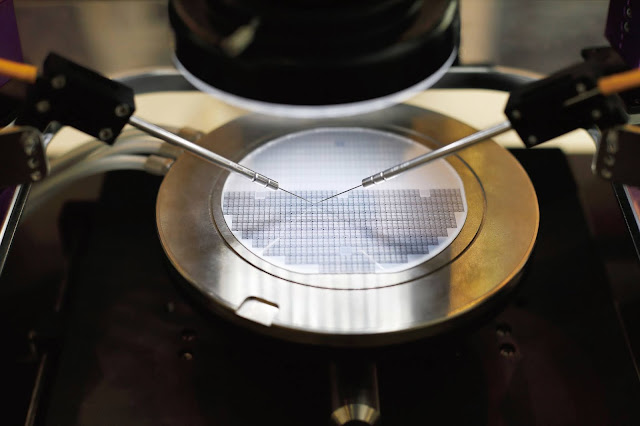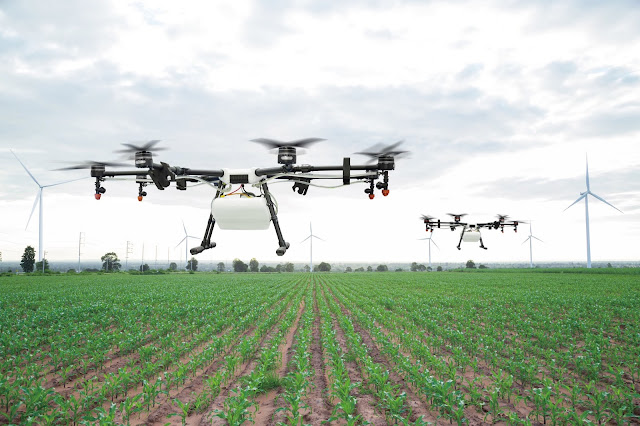A Guide to Understanding the Applications and Development of Hyperspectral Imaging
Article/By Hitspectra Intelligent Technology
Overview of Hyperspectral Imaging
Hyperspectral imaging is the process of collecting and analyzing image data across a wide range of the electromagnetic spectrum. Different substances have unique reflectance spectra, and by analyzing these spectra, materials can be identified, and their chemical composition and relative concentration can be determined. This method, known as spectral analysis, is highly sensitive and efficient, making it a powerful tool for various applications.
Features of Hyperspectral Imaging
The visible spectrum is the portion of the electromagnetic spectrum that the human eye can perceive. However, the mechanism of hyperspectral perception, such as that found in the eyes of the mantis shrimp, extends beyond the visible spectrum, reaching into the infrared and ultraviolet ranges. This hyperspectral capability allows mantis shrimp to distinguish between different types of coral, prey, and predators—a sensory advantage that humans lack. The human eye cannot detect spectral reflections beyond the visible spectrum, but advanced electronic sensors can record these reflections through the photoelectric effect and store them in electronic instruments. The device that records spectral reflections is called a spectrometer, and the recorded data is known as a spectral reflectance map. Since each object has a unique spectral reflectance signature, these spectral maps serve as identification codes for distinguishing different materials or landscapes. The images captured and stored by a spectrometer are referred to as hyperspectral images.

Hyperspectral imaging stores image data across multiple spectral bands, ranging from dozens to hundreds of bands. The smaller the spectral divisions, the more data can be captured, resulting in higher resolution, which can reach the nanometer level.
Engineers have developed sensors and processing systems for applications in agriculture, mining, physics, and surveillance. Hyperspectral sensors detect objects by analyzing a vast range of electromagnetic spectrum bands. Every physical object leaves a unique "fingerprint" in the electromagnetic spectrum. These fingerprints, known as spectral signatures, can be used to identify the composition of the detected object. For example, understanding the spectral signature of oil can assist geologists in locating oil fields.
Applications of Hyperspectral Imaging
Since hyperspectral imaging contains detailed and rich spectral information, it can now resolve distinctions that multispectral imaging previously could not. In recent years, many researchers worldwide have explored the characteristics of hyperspectral imaging, developing various spectral analysis and image classification methods. This has led to numerous applications, such as geological mapping, automatic identification of metals and minerals, classification of forest tree species and agricultural crops, and analysis of soil composition in farmland. Other applications include ecological conservation, water quality monitoring, atmospheric science, environmental surveillance, land surveying, forensic investigation, and food science.
Domestic universities and research institutes publish numerous papers each year on hyperspectral image processing and analysis methods. This field of research is still flourishing, with significant room for technological advancements and improvements. It is hoped that future breakthroughs will continue to support the transformation of more industries.
Applications of Hyperspectral Imaging in Quality Inspection in High-Tech Industries
The semiconductor industry is currently an important development focus in Taiwan. With advancements in technology, the components used are becoming smaller and more complex, and even small errors or damages can have significant effects. Therefore, wafer and thin film inspections are key applications of hyperspectral imaging in the high-tech industry. Optical inspection systems can quickly and comprehensively scan entire wafers, accurately detecting small defects to ensure quality. Hyperspectral technology can also be applied in the inspection of flat-panel displays, identifying bright and dark spots or defects generated during the manufacturing process. Printed Circuit Boards (PCBs), which are used to mount integrated circuits (ICs) and other electronic components (such as resistors, capacitors, and inductors), are primarily inspected using grayscale imaging. However, using hyperspectral imaging with color data allows for more precise identification of the position of each component, reducing the cost and time associated with manual re-inspection.

Application of Hyperspectral Imaging in Early Diagnosis in Healthcare
The combination of hyperspectral imaging and cameras in healthcare is a cutting-edge technology. By using hyperspectral images to assist doctors in diagnosis, it enables the rapid identification of areas with subtle early symptoms, such as distinguishing between skin diseases with similar early symptoms.
The combination of hyperspectral imaging and dermoscopes provides a non-invasive tool to observe abnormalities in skin pigmentation and hemoglobin levels. The early symptoms of psoriasis, atopic dermatitis, and cutaneous lymphoma are very similar and difficult to distinguish with the naked eye. By using hyperspectral imaging, dermatologists can quickly obtain pathological characteristics during the early stages of diagnosis, enabling targeted treatment, shortening traditional diagnostic time, and achieving more efficient medical care.
Other applications include combining hyperspectral imaging with fundus cameras, which can track changes in the retina and detect oxygen levels in the retinal arteries and veins. When integrated with oral cameras and endoscopes, hyperspectral imaging can be used to observe abnormalities in the oral cavity, esophagus, and intestinal tract. For example, in cases of enterovirus symptoms, which cause oral inflammation and ulcers, hyperspectral devices can quickly identify these conditions without the need for biopsy, enabling early detection and immediate treatment while also saving medical resources.
Application of Hyperspectral Imaging in Agricultural System Management
The application of hyperspectral imaging combined with remote sensing technology in agriculture covers a range of techniques, from soil quality detection and water analysis to monitoring crop growth, estimating yields, and ensuring the quality of agricultural products. The integration of hyperspectral imaging with cameras in healthcare is a cutting-edge technology. By utilizing hyperspectral images to assist doctors in diagnosis, it allows for the rapid identification of areas with subtle early symptoms, such as distinguishing between skin diseases that have similar early signs.
Before tilling the land, it is necessary to analyze the soil's heavy metal contamination levels and assess its composition (such as nitrogen, phosphorus content, organic carbon, etc.). Hyperspectral remote sensing can also be used to monitor whether crops are affected by pests and diseases. Currently, there have been application studies on rice diseases, where drones (UAVs) equipped with hyperspectral cameras are used, helping to reduce losses in agricultural products caused by pests and diseases.
Using hyperspectral imaging to detect pesticide residues involves collecting spectral data before and after pesticide application on crops. This allows for the analysis of whether the pesticide application rate is appropriate, helping to avoid excessive pesticide use that could burden the environment or insufficient application that may fail to effectively control pests. It also enables the monitoring of crop quality, ensuring that pesticides are not over-applied and safeguarding consumer health.
Crop growth management involves establishing spectral data for crops at different growth stages, analyzing the spectral variations throughout these stages, and estimating crop yields. It also involves building data based on crop growth conditions under various environments to analyze the relationship between environmental factors and crop growth. By adjusting these conditions, optimal farming practices can be achieved.
Hyperspectral imaging has already been applied in fruit detection. Currently, agricultural research institutes are using hyperspectral imaging data combined with deep learning to develop non-destructive testing techniques. By reading the hyperspectral data of pineapples, it is possible to determine the fruit quality, sugar content, ripeness, and whether the pineapple is a "meat-sound" or "hollow-sound" fruit, facilitating sorting and grading. Additionally, the sweetness of thin-skinned fruits such as wax apples and mangoes can also be measured directly using hyperspectral instruments without causing any damage.

Hyperspectral Imaging in Food Management – Analytical Applications
Nanometer-level spectral analysis can quickly detect the condition and quality of food, ensuring consumers are protected from food safety issues. The characteristics of hyperspectral imaging for detection include: fast analysis, no need for sample pre-processing, non-destructive testing, and higher sensitivity. Taking eggs as an example, the eggshell is prone to contamination by microorganisms from feces, and the freshness and safety of eggs are closely related. Using hyperspectral imaging analysis, the eggshell can be inspected without damaging the egg structure, detecting whether microorganisms are present on the shell and evaluating the egg's freshness. This ensures that every egg is safe to consume. This technology can not only be applied to eggs but also to various agricultural products.
Advantages of Hyperspectral Imaging in Remote Sensing and Its Applications in Air Pollution Detection
In recent years, air pollution has become increasingly severe, causing widespread harm to the human body. It can damage the lungs and even enter the bloodstream, affecting various areas of health. Diseases linked to air pollution include respiratory diseases, obesity, diabetes, cardiovascular diseases, strokes, and dementia. As a result, air pollution detection has become a topic of widespread concern. Using hyperspectral imaging technology for air pollution detection involves mounting instruments on drones to capture spectral data from each pixel in the images. The advantages of this approach include large-scale remote monitoring, geographical flexibility, and a significant reduction in equipment and operational costs.

Agricultural inspection using drones equipped with hyperspectral imaging technology
Different substances absorb sunlight energy differently. By establishing a spectral database of specific absorption characteristics for various materials and analyzing the corresponding images, it is possible to identify the main air pollutants present in different areas. These pollutants include coarse particulate matter (PM10), fine particulate matter (PM2.5), ozone (O3), nitrogen dioxide (NO2), sulfur dioxide (SO2), and carbon monoxide (CO). This approach enables remote monitoring of air pollution distribution and concentration, providing a valuable tool for environmental monitoring and management.
Hyperspectral imaging recognition assists in criminal investigations with more accuracy and speed
In the past, many social cases resulted in miscarriages of justice due to insufficient technology and identification capabilities. Modern forensic science, in the field of "physical evidence identification," uses non-destructive, non-chemical methods to compare and identify non-biological evidence. This includes gunshot residue, documents, fingerprints, tool marks, imprints, voiceprints, image identification, and microtrace evidence.
Hyperspectral imaging technology captures images at different wavelengths of light, revealing various traces that are not visible to the naked eye. These include traces of overwritten or altered handwriting, blood or bodily fluid contamination at different times, smokeless powder reactions caused by gunpowder, shoe prints, fingerprints, and anti-counterfeit treatments on banknotes or securities. These are often easier to observe with changes in the light source. Furthermore, the detected spectra can be used for rapid object comparison, providing more valuable scientific evidence to help forensic experts target suspects and assist in case investigations.
Hyperspectral Gemstone and Artwork Material Identification
Artwork, such as antiques, porcelain, oil paintings, and gemstones, have a significant difference in value based on their authenticity, which is difficult to determine with the naked eye without professional training. By using hyperspectral instruments for spectral analysis, more information can be gathered for identification. For example, in paintings, the same color may be perceived differently by different people, leading to varied impressions. Therefore, understanding the composition of the pigment used becomes essential when restoring a painting. Hyperspectral instruments can reveal details invisible to the human eye, such as hidden signatures or unique pigments. This technology provides a basis for determining authenticity and restoring cultural relics, reducing the labor and time required compared to traditional methods, while also allowing for a more precise restoration of the artwork's original colors.
Hyperspectral imaging brings innovation to automatic inspection systems
The electronics industry widely uses Automated Optical Inspection (AOI) technology, typically presenting images in grayscale or color. However, these two types of AOI image analysis can lead to misjudgments due to unclear shadows and brightness. Hyperspectral cameras can address these issues and bring innovation to the technology. With fine resolution, they can capture more data, compensating for the shortcomings of traditional grayscale image analysis. Additionally, traditional AOI inspects on a point-to-point basis, while hyperspectral smart detection can be flexibly adjusted based on the size of the object, allowing for large-area and rapid detection of defects. The core technology of Haibo Vision Smart Technology combines hyperspectral imaging analysis with AI, capturing nanoscale spectral continuous image data to enhance AOI technology and assist in the transformation of smart manufacturing industries.
Hitspectra Intelligent Technology——A pioneering company developing cutting-edge recognition systems
Hyperspectral imaging recognition technology is widely applied across multiple industries, helping various sectors enhance productivity. Haibo Vision Smart Technology is dedicated to developing cutting-edge recognition systems and currently collaborates with industry partners to develop suitable hyperspectral cameras combined with AI technology. Haibo Vision's development focus includes biomedical optical detection and semiconductor optical inspection. Its core patents cover hyperspectral image processing technology, optical module systems, and color imaging. The company has also advanced into optical detection of cancer cells, such as esophageal cancer, skin cancer, and oral lesions, as well as semiconductor thin-film optical inspection. Haibo Vision has obtained multiple patents in Taiwan and the United States and integrates big data analysis and machine learning to enhance the technology's excellence.
Reference materials
Feature Extraction for HyperSpectral Images, Pai-Hui Hsu; Yi-Hsing Tseng,Journal of Aerial Surveying and Remote Sensing ;Volume 5, Issue 2 (2000 / 06 / 01) , P1 - 14
〈Hyperspectral Imaging Combined with Deep Learning to Select Sweet Pineapples; Next Step: Identifying the Best Ones for Export〉,游昇俯,《Agricultural Media》,2019/12/24
〈The system makes defects impossible to hide.〉,KLA,EET Taiwan,2020/3/25


